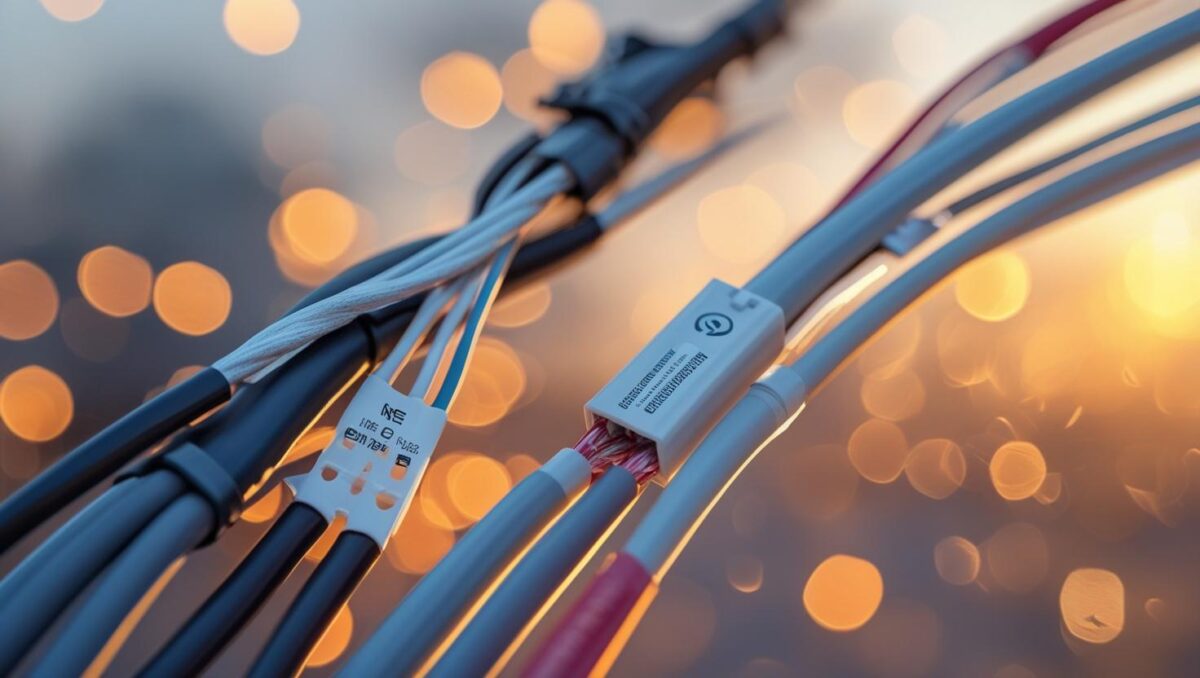Have you ever wondered about the difference between a wire harness and a cable harness? Don’t worry—you’re not alone. Most people think they’re the same thing. While they do sound similar and are often used in the same industries, they serve different purposes. In this article, we’ll break it down simply so you can understand how they differ, where they’re used in India, and what you should consider when choosing between them.
1. What is a Harness System?
Before we dive into the differences, let’s understand what a harness system is. Simply put, it’s a collection of wires, cables, connectors, and terminals that transmit power or signals. These harnesses are used in everything—from your car and washing machine to aircraft and data centres.
In India, the market for wiring harnesses is growing rapidly due to increased production in the automobile, electronics, and industrial automation sectors. According to a recent report by Research and Markets, India’s wiring harness market is projected to grow at a CAGR of 12.3% from 2023 to 2028.
2. What is a Wire Harness?
A wire harness is a collection of individual wires bundled together using sleeves, zip ties, or wraps. Each wire has its insulation and carries electrical signals or power independently.
Key Components
- Individual wires
- Terminals and connectors
- Heat-shrink tubes and sleeves
Where is it used in India?
Wire harnesses are commonly used in:
- Two-wheelers and passenger vehicles
- Consumer electronics
- Home appliances
For instance, leading automotive brands like Hero MotoCorp and Bajaj Auto rely on local wire harness manufacturers in India for electrical connections in their bikes and scooters.
- What is a Cable Harness?
A cable harness, also known as a cable assembly, is a group of cables (each with multiple conductors) bundled together. These harnesses are better suited for complex operations requiring multiple signal or power paths in a single thick cable.
Key Components
- Multi-conductor cables
- Strong external sheathing
- Protective insulation layers
Where is it used in India?
Cable harnesses are essential in:
- Railways and metro systems
- Industrial control panels
- Aerospace and defence
- Heavy machinery and telecom
Leading cable harness manufacturers in India serve clients like Indian Railways, L&T, and ISRO for critical applications.
4. Key Differences Between Wire Harness and Cable Harness
| Feature | Wire Harness | Cable Harness |
| Structure | Multiple single wires bundled | Group of cables inside one sheath |
| Flexibility | More flexible, ideal for tight spaces | Less flexible, thicker and heavier |
| Protection | Basic insulation | Heavy-duty insulation and shielding |
| Application Complexity | Simple to medium | Complex and high-performance |
| Cost | Lower | Higher due to added protection |
So, if you’re wiring a small home appliance, go for a wire harness. But if you’re dealing with high-load systems or harsh environments like factories, a cable harness makes more sense.
5. Applications of Wire Harness in India
Let’s talk local now.
Wire harnesses are a backbone for:
- Automotive: From headlight connections to engine sensors, wire harnesses power most parts.
- Consumer Electronics: Laptops, televisions, and air conditioners use them for internal connections.
- Appliances: Washing machines and refrigerators have numerous wire harnesses inside.
India has hundreds of small and large wire harness manufacturers located in industrial hubs like Pune, Gurugram, Chennai, and Ahmedabad.
6. Applications of Cable Harness in India
Cable harnesses are often preferred where more rugged, high-performance wiring is required. Key use cases:
- Metro and Rail Projects: With increasing investments in infrastructure like Mumbai Metro and Delhi Metro, demand for cable harnesses is high.
- Aerospace: DRDO and ISRO use advanced cable harnesses for satellites and defence tech.
- Heavy Engineering: Factories rely on cable harnesses for automation and control systems.
Due to their reliability, many Indian businesses now prefer local cable harness manufacturers over imported solutions.
7. Manufacturing Process: Wire vs Cable Harness
While both types of harnesses follow a similar production method—cutting, stripping, crimping, and assembling—the material used, insulation, and testing procedures vary.
In India, top manufacturers follow ISO 9001, TS 16949, and other global certifications to maintain quality.
Fun fact: A good wiring harness can have up to 500 wires and more than 100 connection points, depending on the product.
8. Benefits of Each Type
Wire Harness Benefits
- Lightweight and more affordable
- Easy to route in small devices
- Ideal for low to medium voltage
Cable Harness Benefits
- Durable and robust
- Better protection from heat, moisture, and vibration
- Ideal for outdoor and industrial use
Choosing the right one really depends on your project requirements.
9. Challenges Faced in Harness Design
In India, OEMs and engineers face several challenges:
- Space Constraints in compact two-wheelers and EVs
- Temperature Resistance needed in regions like Rajasthan or Gujarat
- Cost Management for mass production while maintaining quality
Working closely with experienced wire harness manufacturers in India helps reduce errors and cost overruns.
10. Latest Trends in Harness Technology (India 2025)
With India moving towards EVs and automation, harness systems are evolving too.
- Flame-retardant materials are becoming standard in automotive harnesses.
- Smart harnesses with embedded sensors are being developed for health monitoring in machinery.
- Electric Vehicle Harnessing is a hot trend as companies like Tata, Ola Electric, and Ather ramp up EV production.
11. How to Choose the Right Harness Supplier in India
Here are some quick tips before you partner with a harness supplier:
- Check if they serve your industry vertical (automotive, defence, industrial, etc.)
- Look for quality certifications
- Ask about customisation options and after-sales support
- Read client reviews and case studies
Some reputed wire harness manufacturers in India include:
- Motherson Group
- Spark Minda
- Yazaki India
- Suprajit Engineering
Similarly, for industrial and defence-grade projects, companies like AMP India, Rohit Industries, and Paramount Wires are leading cable harness manufacturers in India.
12. Conclusion
So now you know—while wire harnesses and cable harnesses might seem similar, they’re built for different jobs. A wire harness is great for basic applications like electronics or home appliances, while cable harnesses shine in heavy-duty setups like industrial machines or transport systems.
As India continues to electrify and digitize, the demand for high-quality harnesses will only grow. Whether you’re a manufacturer, an engineer, or just a curious reader, understanding this difference can help you make better decisions.
Need wiring support for your project? Reach out to an expert harness manufacturer and get a solution tailored to your needs.





